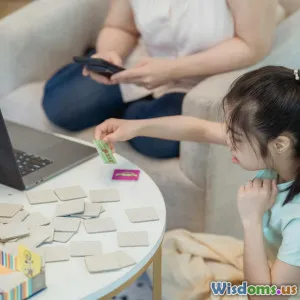
Transforming Education with Technology
6 min read Explore how technology is revolutionizing education through personalized learning, accessibility, and innovation. (0 Reviews)
Transforming Education with Technology: Revolutionizing Learning for a New Generation
Education stands at a pivotal crossroads, propelled by rapid technological advances that challenge traditional paradigms and unlock unprecedented opportunities. Once confined to chalkboards and textbooks, classrooms worldwide are evolving into dynamic digital hubs. But how exactly is technology reshaping learning, and why should educators, students, and policymakers embrace this transformation with urgency?
Personalized Learning: Catering to Individual Needs
Perhaps one of the most profound impacts of technology in education is the shift towards personalized learning. Platforms such as Khan Academy and Coursera adapt dynamically to individual learners’ pace and style, providing tailored content that traditional classrooms struggle to deliver. According to a 2021 study by the Bill & Melinda Gates Foundation, 75% of teachers who integrated personalized digital learning reported improved student engagement.
Example: DreamBox Learning, an adaptive math program, uses real-time data analytics to modify lesson difficulty instantaneously, helping students gain mastery before progressing. This results in better retention and performance — a testament to technology's power to individualize education.
Accessibility and Inclusivity: Breaking Down Barriers
Technology is significantly increasing education access, especially in underserved communities. Digital devices and internet connectivity enable remote learning for millions.
During the COVID-19 pandemic, UNESCO reported that over 1.5 billion learners worldwide shifted to online platforms. Despite challenges, this enforced adoption accelerated the development and deployment of accessible tools, such as screen readers and real-time translation apps, benefiting students with disabilities and non-native speakers.
Real-World Insight: Initiatives like One Laptop per Child have demonstrated how affordable hardware can connect disadvantaged children to quality resources. In regions like Sub-Saharan Africa, digital classrooms have mitigated teacher shortages and reduced travel barriers.
Collaborative Learning through Technology
The classroom of today is no longer confined to physical walls. Video conferencing, cloud-based collaboration tools like Google Workspace, and virtual classrooms foster global connections.
As Harvard EdCast highlights, collaboration technology encourages peer-to-peer interaction, critical thinking, and problem solving by enabling students from diverse backgrounds to work together in real time.
Example: The ePals Global Community platform connects over 2 million learners worldwide, promoting cultural exchange and interdisciplinary projects that inspire global citizenship skills.
Innovations Amplifying Educational Outcomes
Emerging technologies such as Artificial Intelligence (AI), Virtual Reality (VR), and Augmented Reality (AR) are revolutionizing experiential learning:
- AI: Intelligent tutoring systems use machine learning to assess student weaknesses and provide targeted interventions. GPT-based tools can assist with writing, coding, and language learning.
- VR/AR: Immersive experiences like Google Expeditions transport students to historical sites or inside human anatomy, vastly enriching engagement and comprehension.
A 2022 report by HolonIQ forecasts that global edtech investment will reach $404 billion by 2025, signaling growing confidence in technology’s ability to deliver measurable educational improvements.
Challenges on the Path to Digital Transformation
Despite promising advances, integrating technology into education entails challenges:
- Digital Divide: Socioeconomic disparities affect equitable access to devices and reliable internet.
- Teacher Training: Educators require ongoing professional development to effectively leverage new tools.
- Data Privacy: Protecting student information remains a critical concern.
Addressing these aspects through policy frameworks and investment will be vital for sustainable progress.
Conclusion: Embracing the Future of Learning
Technology’s role in transforming education is not merely about digitization but fundamentally reimagining how knowledge is imparted and acquired. It offers a pathway to more personalized, inclusive, and interactive education — empowering learners everywhere to unlock their full potential.
As Nelson Mandela famously said, “Education is the most powerful weapon which you can use to change the world.” Harnessing technology responsibly can amplify that power, ushering in an era where quality education is accessible, engaging, and equipped for the demands of the 21st century and beyond.
Whether you are an educator, student, or policymaker, now is the moment to advocate for and participate in this transformative journey.
References
- Bill & Melinda Gates Foundation (2021). "The Impact of Personalized Learning on Student Engagement."
- UNESCO (2020). "COVID-19 Educational Disruption and Response."
- Harvard EdCast. "Collaborative Technology in Modern Classrooms."
- HolonIQ (2022). "Global EdTech Market Forecast."
- One Laptop per Child Project. "Connecting Disadvantaged Learners Worldwide."
Rate the Post
User Reviews
Popular Posts




















